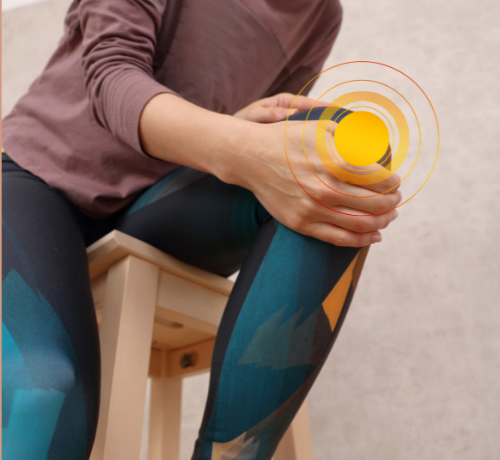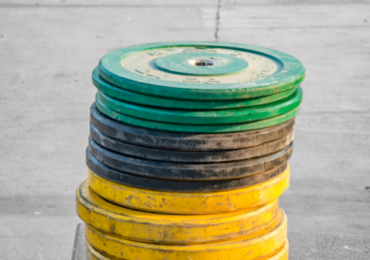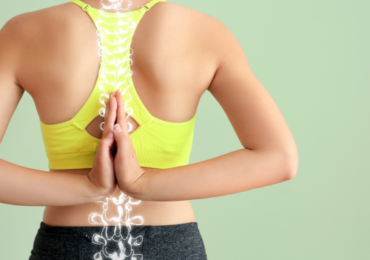Joint pain is far too common, and it can really impede our training results and reduce quality of life.
But fear not! There’s so much we can do to bulletproof our joints, so they feel more stable and stronger through a greater range of motion.
Why joint pain is so common?
When exercising, our ligaments and tendons will adapt to training demands over the course of months, in contrast to muscles which can adapt in a number of days or weeks! So, it’s only natural for many people to feel strong and fit in training because their muscles are growing, but to feel like their joints are not keeping up with the training load.
On top of that, joints are complicated, and they have so many moving parts, which means there’s lots that can go wrong! They are required to go through such a large range of motion (think about your shoulder and hip for example), and because of this they demand a lot of strength and stability to reduce wear and tear and prevent breakdown.
What can I do about my joint pain?
Firstly, respect your joints. When they are in pain, they are inflamed, and therefore they need rest. You can help them recover faster with anti-inflammatory practices like the ones listed below. But ultimately, you need to manage the load you put your joints under. If they aren’t keeping up with your training regime, you may need to give them more recovery time and include other training methods that are less demanding on joints such as swimming or cycling.
Secondly, get an expert opinion. Why? Did I mention how complex joints are? For a faster return to training and for best long-term results it will help you greatly to know WHAT is wrong and WHY. You might have a muscle imbalance, which means that specific strengthening exercises can prevent the problem from reoccurring. You might have a cartilage tear that could benefit from improving a movement pattern. Different diagnoses will call for different solutions and the faster we have answers, the faster we mend and prevent future issues.
Thirdly, help them heal! There are many great strategies we can use to help reduce inflammation in our joints. You don’t need to do all of them, just choose a couple of options and focus on doing them consistently. Like everything in health, consistency is the most important part.
- Prioritise good sleep and recovery. The body heals best when at rest.
- Keep good blood flow to your joints with restorative movement, massage, foam rolling and stretching. Plus, try to avoid sitting for long periods of time without moving.
- Maintain good muscle function above and below the joint. This means that all the muscles connected to the joint should be knot free and pain free as much as possible. This will prevent muscles ‘pulling’ the joint off centre and avoid creating compensatory movement patterns.
- Reduce training load while working on any muscle weakness. This will allow the joint to heal while stabilising and strengthening it at the same time so it can handle more load when you return to training.
- Pay attention to your diet and restrict inflammatory foods (eg. processed food, sugar, diary, and any food you might be intolerant to)
- Get a good source of omega-3s and try a good fish oil supplement, especially if the problem is coming from the joint itself.
- Consider taking a good magnesium supplement if you aren’t already.
- Finally, avoid pushing through pain because this will cause more compensatory patterns
How to bulletproof your joints for greater strength, stability, mobility, agility and confidence in your body:
- Build up slowly to allow all your joint structures to adapt to an increased training load. Remember, they take longer to adapt than muscles!
- Make sure that some of your training includes working your joints through their full range of motion. This is important when bullet-proofing joints, because we only adapt in the range that we train in. So, if you never bend a knee fully in training, you will not gain any strength at that range.
- Work to reduce muscle imbalance so that you don’t end up with really strong quadriceps and weak hamstrings, or a really strong right leg and a weak left leg. These sorts of imbalances put a lot of pressure through our joints and will eventually cause problems if they aren’t already.
- And finally, give them some TLC when they are sore
Having strong, stable and mobile joints is a fantastic training goal which becomes even more important as we age, plus it will keep you feeling unstoppable!
***************
For more tips around motivation, health and fitness for women, sign up to our Newsletter below and follow us on socials.
Facebook:
https://www.facebook.com/strongwomencanau
Instagram:
Join our closed Facebook Community: https://www.facebook.com/groups/strongwomencan



